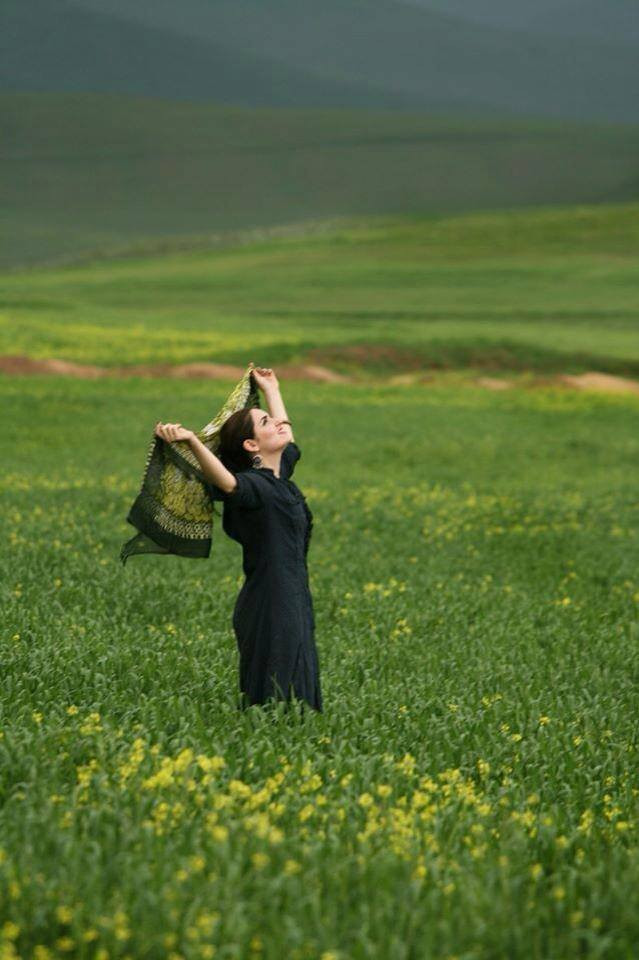How the women in Iran are still fighting for their freedom
The "women, life, freedom" protests continue throughout the country, women continue to refuse the hijab and dancing is a new symbol of protest.

It has been 9 months since Jina "Mahsa" Amini died while in the custody of Iran's morality police, previously reffered to as "Gasht-e Ershad". The 22-year-old was arrested in September 2022 for "improperly" wearing her hijab. She was held in custody for three days, until she was pronounced dead by medical professionals in hospital.
The Iranian authorities deny harming Mahsa Amini, insisting that her death was caused by a sudden heart-failure. Amini's family have said that the young woman had no previous health issues.
Her death triggered a women-led revolution, as an influx of campaign groups that protest for "women, life, freedom" erupted in Iran.
In the month after her death, the hashtag #MahsaAmini was tweeted and retweeted over 300 million times.
Never forget, Never forgive!
— Nawid🇪🇺 (@nawid_23) May 7, 2023
Mahsa, gole man.
Gina, shirinem. #IranRevoIution #MahsaAmini pic.twitter.com/nlTppzKBfv
The stream of protests was recognised globally, as women began burning their headscarves, and cutting their hair. Women all over the world joined the revolution, also cutting their hair, as a symbol of their solidarity with the women in Iran.
Powerful video by former political prisoner Nazanin Zaghari-Ratcliffe cutting her hair for #Mahsaamini and women of #Iran pic.twitter.com/Nu6URq7Yf3 #مهساامینی
— CSHR (@CSHRIran) September 28, 2022
Today, the women and girls continue to oppose the Shiite Islam-driven regime, that came to power in 1979, by burning the hijab in rallies and cutting their hair.
Human rights activists have revealed that the Iranian government have since detained over 20,000 protesters, more than 500 of which been killed.
Islam-based laws in Iran make dancing and singing in public illegal for women and girls. Videos of the women, dancing in the streets, have started to go viral on social media.
Recently, five Iranian girls from Tehran, were detained for 48 hours after a video of the group dancing to Selena Gomez's "Calm Down" went viral on TikTok. The footage depicted the girls, widely known as the "Ekbatan girls", dancing in unison unveiled, and wearing cropped shirts.
This video of Iranian girls in Tehran’s Ekbatan neighborhood dancing unveiled to the song Calm Down by Rema and Selena Gomez has gone viral.
— Iran International English (@IranIntl_En) March 9, 2023
Women are banned from dancing in public in Iran. pic.twitter.com/2hSsY4KFEg
The obligatory dress code in Iran calls for women to wear headscarves, and clothes that cover their: arms, legs, and stomach. The morality police are able to detain anyone they believe is "improperly" dressed.
Journalist, Kymya Tehrani, who was born and raised in Iran, revealed that: "In Iran you can't ride a bike as a woman. In Iran you can't sing as a woman."
She continued with: "In Iran you can't go to a peaceful protest, because you will get shot. In Iran the hijab is mandatory. In Iran it is legal to get married after the age of 9, because that is when you are a 'woman'."
A doctor, from a city near Tehran, said that security forces from the regime "shoot at the faces and private body parts of women".
Since their arrest, women in Iran have been dancing to the song "Calm Down", posting their videos on social media, along with the trending hashtag #dance4iran.
People from all over the world are continuing to raise awareness and their support for the "women, life, freedom" movement, by dancing in solidarity with the five girls.
Not only is the hijab compulsory for women in Iran, but they are constantly reminded of it with posters in shopping malls, billboards, restaurants around the country. Despite this, many women are going out in public with their hair uncovered.
A 63-year-old woman, living in a north Tehran neighbourhood, no longer wears her headscarf. She said: "The only thing that I can really do at this age is to not have a scarf."
"To have a scarf or to not have a scarf, for me, is very important. I'm not young enough to show off my hair, but I'm not wearing it to show that my views are against the government's views," she added.
© Copyright IBTimes 2025. All rights reserved.






















